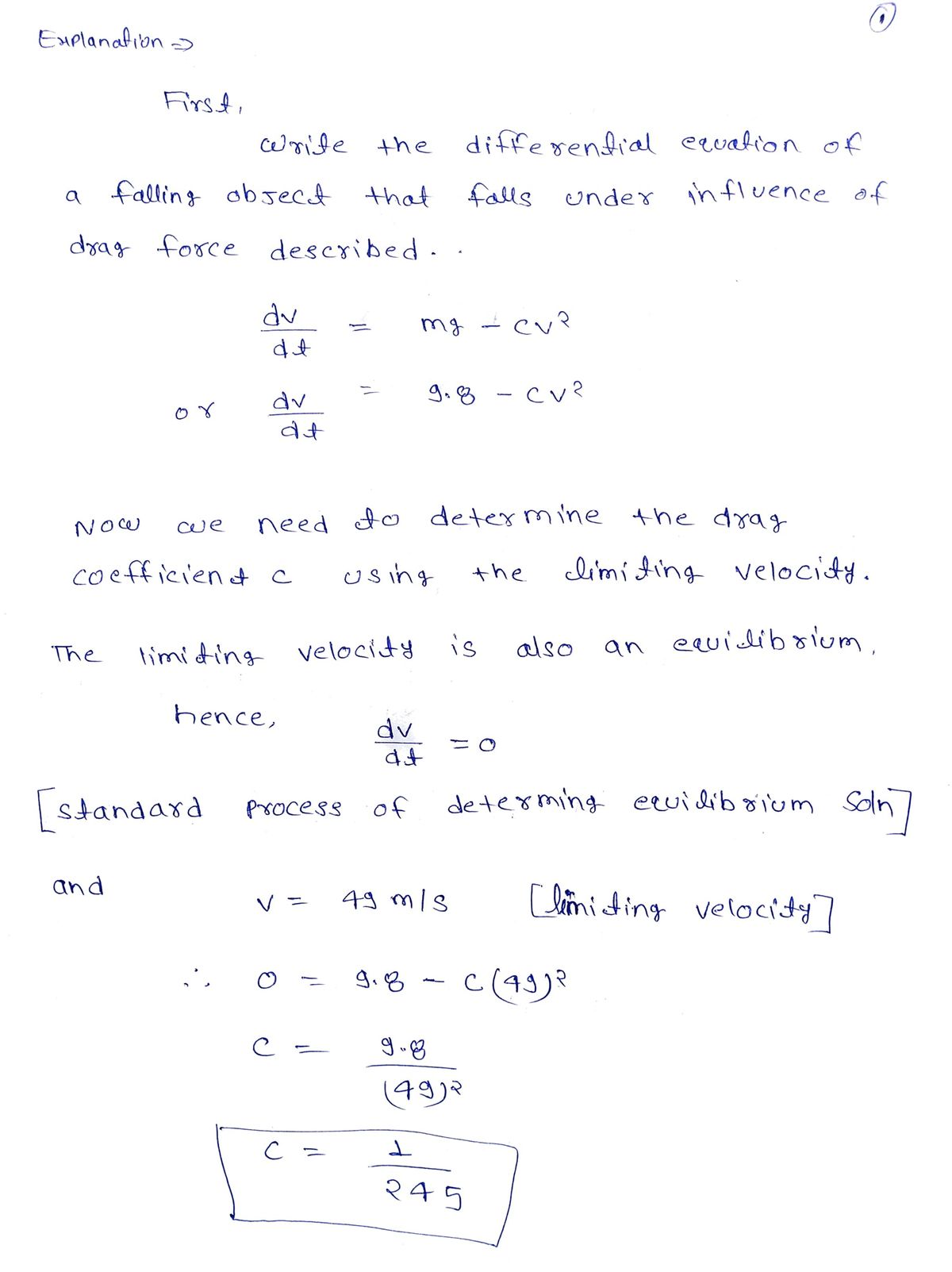9. Consider the falling object of mass 10 kg in Example 2, but assume now that the drag force is proportional to the square of the velocity. a. If the limiting velocity is 49 m/s (the same as in Example 2), show that the equation of motion can be written as dv 1 dt 245 (49² - 1²). = Also see Problem 21 of Section 1.1. b. If v(0) = 0, find an expression for v(t) at any time. G c. Plot your solution from part b and the solution (26) from Example 2 on the same axes. d. Based on your plots in part c, compare the effect of a quadratic drag force with that of a linear drag force. e. Find the distance x(t) that the object falls in time t. Nf. Find the time T it takes the object to fall 300 m.
9. Consider the falling object of mass 10 kg in Example 2, but assume now that the drag force is proportional to the square of the velocity. a. If the limiting velocity is 49 m/s (the same as in Example 2), show that the equation of motion can be written as dv 1 dt 245 (49² - 1²). = Also see Problem 21 of Section 1.1. b. If v(0) = 0, find an expression for v(t) at any time. G c. Plot your solution from part b and the solution (26) from Example 2 on the same axes. d. Based on your plots in part c, compare the effect of a quadratic drag force with that of a linear drag force. e. Find the distance x(t) that the object falls in time t. Nf. Find the time T it takes the object to fall 300 m.
Related questions
Question

Transcribed Image Text:9. Consider the falling object of mass 10 kg in Example 2, but
assume now that the drag force is proportional to the square of the
velocity.
a. If the limiting velocity is 49 m/s (the same as in Example 2),
show that the equation of motion can be written as
1 (49² - 1²).
245
dy
dt
Also see Problem 21 of Section 1.1.
b. If y(0) = 0, find an expression for v(t) at any time.
Gc. Plot your solution from part b and the solution (26) from
Example 2 on the same axes.
d. Based on your plots in part c, compare the effect of a
quadratic drag force with that of a linear drag force.
e. Find the distance x(t) that the object falls in time t.
Nf. Find the time T it takes the object to fall 300 m.
Expert Solution
Step 1

Trending now
This is a popular solution!
Step by step
Solved in 4 steps with 4 images
